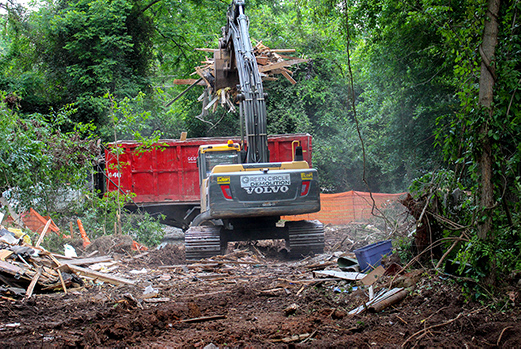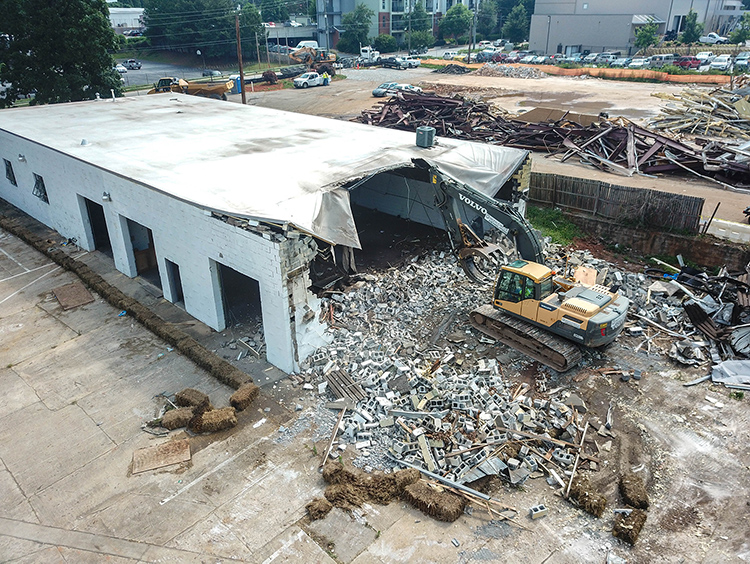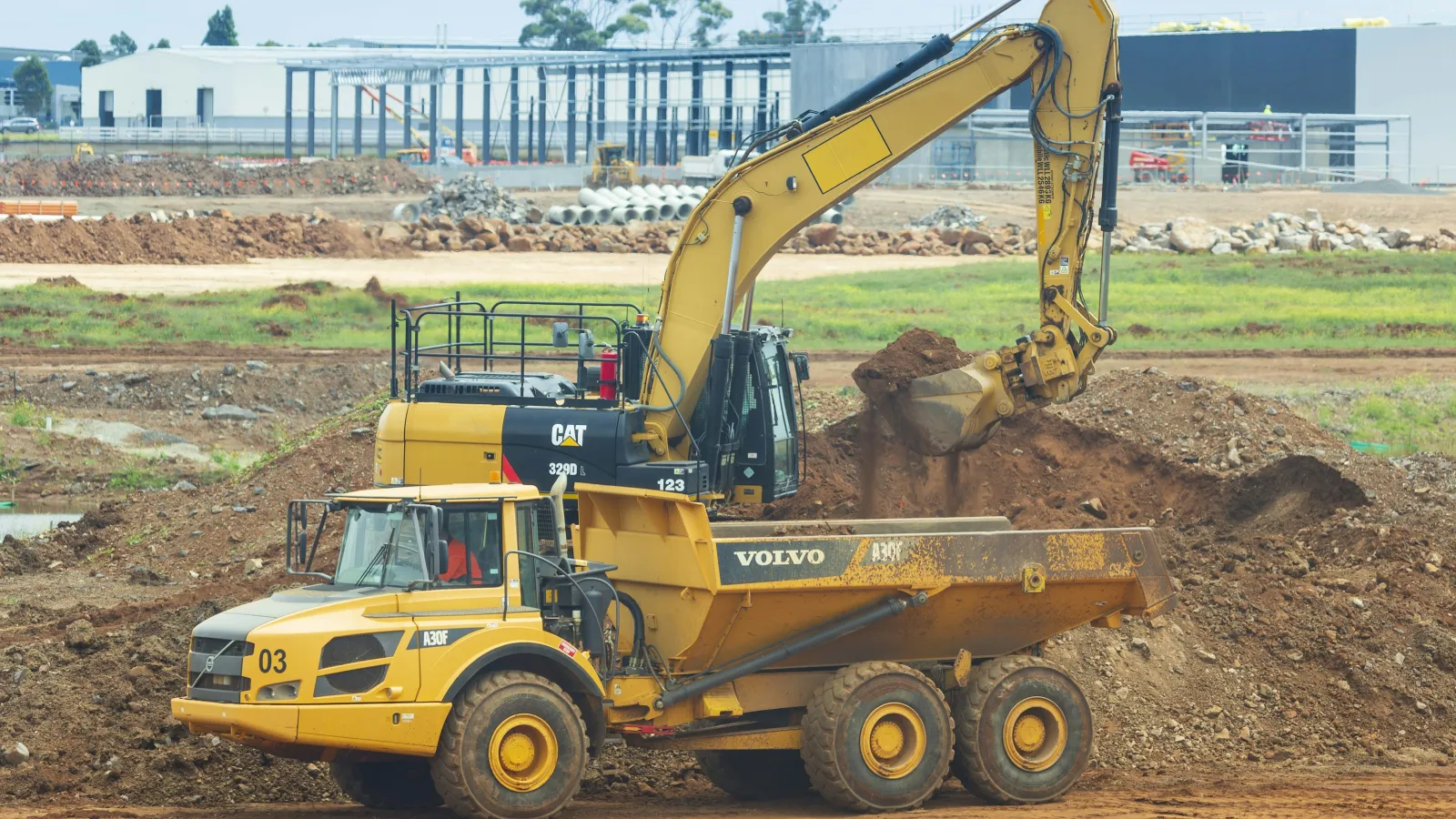One of the most common questions that we get at Green Circle Demolition is "How much will it cost to tear down my building?". This simple question requires much more than a generalized number based on the square footage of the space; therefore we are going to supply you with some rough numbers you can use as guidelines.
The demolition costs for a project fall into two categories: pre-demolition and on-site demolition costs.
Pre-Demolition
Pre-demolition is essentially the steps mandated by your local legislature to remove any structure(s).
PRE-DEMOLITION COSTS ($2,500 - $50,000)
Pre-demolition costs are associated with the steps the responsible party takes in getting the structure legally ready for demolition. The responsible parties are usually general contractors, owners, or demolition contractors. These costs vary by the location and the mandates set forth by the local municipality, but it can cost anywhere from $2,500-$50,000. This cost of is made up of several steps that make up the pre-demolition step but are ultimately dependent on a few factors.
FACTORS THAT DETERMINE PRE-DEMOLITION COSTS:
There are three primary factors that will contribute to pre-demolition costs:
Location
Mandates set forth by the local municipality
Hauling
For example, if you have a large multistory building in any major city, you could easily expect to spend over $10,000 on just the demolition permit. This permit does not include an engineer getting on board, the plans for the project, environmental testing, and a rodent letter among many other reports.

Demolition
The other half of the cost equation is the actual demolition of the building. The phrase that we repeat to customer after customer is "demolition is 10% knocking it down and 90% cleaning it up and hauling it off."
DEMOLITION COSTS ($2/SF-$7/SF+)
There are a variety of factors that contribute to actual demolition costs but you can expect the costs to range from $2/SF to $7/SF. No two projects are alike however but this range is a great starting point. In an ideal situation of $2/SF you would be tearing down a metal structure that is easy to tear down and has low disposal costs. Brick buildings would be the worst case scenario costing at least $7/SF due to lack of disposal options and overall scope of the building. To go further in depth on these costs we have broken down the factors that dictate where exactly your project may fall.
Factors That Determine Demolition Costs
What influences the demolition, cleanup, and haul-off are the structural materials that were used while constructing the building. These materials include metal, wood, and masonry. Each of these materials will have a direct reflection on the cost of your demolition, see below:
Metal structures-$2/SF+
Metal structures are thought to be the most favorable to encounter because of how cost-effective they are to demolish. Often times, metal buildings are a series of I-beams that are bolted or welded together with a cosmetic skin enclosing it. This cosmetic skin is usually simple to dispose of with minimal effort. Once the metal is exposed, the structure can be brought down with an excavator or torched to manageable pieces.
The major advantage of demolishing this class of buildings is the recyclability. The ability to recycle the metal structural components greatly cuts down on the disposal cost and will actually put money back in the contractor's pocket. We have not found any substantial drawbacks or difficulties when it comes to dealing with these structures.

Wood Structures-$4/SF-$7/SF+

Most residential homes and apartment complexes are "stick built" or wooden structures. These wood buildings are fairly straightforward to demolish with the right sized excavator (link to excavator blog), but the disadvantage lies in the disposal of debris. Unlike the metal structures, there is no recycling value to be found with these structures.
Since wood is a decomposable organic material, landfills classify it as construction debris. Construction debris is the most common and also the most expensive load to be disposed of. Because of this, when this structure is demolished the contractor will not see any reason to sort through the debris and instead dispose of it all as a mixed material. This makes compacting the material much harder than with other building materials. When materials cannot be compacted, it means that it will take more dumpsters and therefore more money to complete the project.
Brick Structures-$4/SF-$7/SF+

Brick buildings are a double-edged sword much like wooden structures. Schools, hospitals, and older buildings are the structures this material can be found. There are two different kinds of masonry structures that you may come across. The first and easiest to deal with is a CMU (cinder block) building. The hollow gray colored blocks can be found in 4, 8, 10, and 12-inch sizes. Much like metal and wood, bringing down CMU structures is straightforward with the correct machinery.
Once the building is brought to the ground, debris is sorted, and then hauled off to be recycled. This kind of masonry material can be recycled because once crushed and returned to aggregate, it can be used to make any concrete product in the future.
However, if a masonry building happens to be brick, it is a story much like their wooden structure counterparts. As of late, it is very challenging to find a facility that will recycle brick, so in most cases, it is treated as construction debris loads. This load of brick debris will be over twice the price of the wood due to the massive difference in weight between the two substances.
There are a lot of factors that can impact the total cost of your demolition. Keep in mind that the disposal costs will dictate if the project ends up being a budget buster or a resounding success. If you have more questions about demolition costs you can contact us and speak to an estimator.




